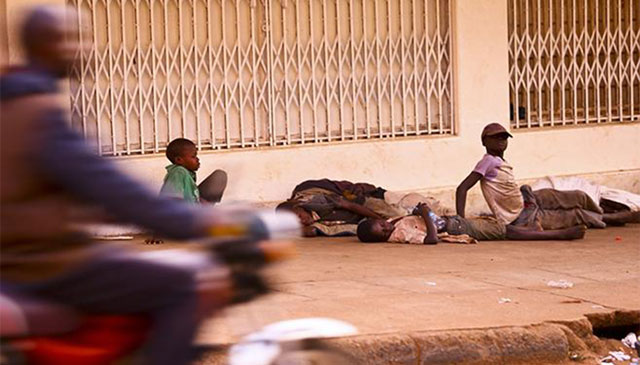
Solutions for the large number of people who spend their nights on Kampala city’s sidewalks, verandas, corridors, and trenches
COMMENT | MICHAEL WOIRA | This week, I took a midnight walk around Kampala to experience the city during the early hours. I traversed from Ben Kiwanuka Road towards the Old Taxi Park and explored several other streets. What struck me was the large number of people vying for spaces to rest, from sidewalks to verandas, corridors, and even trenches – all serving as makeshift homes.
This firsthand experience prompted me to discuss the issue with my colleague Carol, who shared her own insights. She emphasized that what I witnessed was just the surface of a much larger issue, highlighting the gravity of homelessness. Carol even recounted a personal story about her mother sheltering a young girl temporarily, shedding light on the human side of this complex problem.
Based on my observations and conversations with individuals from diverse backgrounds, it’s evident that homelessness is typically not a deliberate choice; rather, it often arises due to circumstances beyond one’s control. As a result, it is imperative to extend generous and compassionate assistance to homeless individuals without subjecting them to social isolation, pity, job insecurities, or humiliation. Instead, they should be supported in a manner that preserves their dignity and fosters empowerment, enabling them to regain stability and self-sufficiency.
Every homeless person has a distinct story explaining their circumstances and why they live as they do. Even those who struggle to express their situation may have been compelled into homelessness by various factors. After witnessing the heartbreaking scenes on the verandas at night and feeling moved, I feel driven to document the stories of homeless individuals. Drawing from personal observations and narratives shared by friends, these stories not only reveal their challenges but also showcase their resilience and humanity in the face of hardships.
Homelessness is not a choice. Contrary to stereotypes linking homelessness with criminality and drug addiction, the reality is different. Many homeless individuals are facing family issues, parental loss, or have been affected by natural disasters. These circumstances can lead to homelessness, emphasising the need for empathy and understanding rather than judgment.
Homelessness is rapidly increasing due to natural disasters, leaving thousands of men, women, and children without homes across the globe. In many cities, you can see homeless individuals living in specific areas on the streets, highways, cars, and under bridges.
This issue is prevalent even in affluent first-world countries like the United States, including cities such as Philadelphia, New York, Seattle, Long Beach, Los Angeles, Portland, Oakland, Sacramento, San Jose, Fresno, and many others. I have come across these realities through YouTube videos by individuals like Peter Santenello, who shed light on the unseen struggles within wealthy cities.
I firmly believe that anyone can become homeless at any moment. Natural disasters occur frequently, and they have the power to render people homeless and in need almost instantly. This reality is often overlooked until it directly impacts someone. Many homeless individuals never anticipated such a situation because they have been fortunate throughout their lives. However, it’s essential to recognize that some individuals have faced adversity from birth, compounding their challenges further.
The homeless and needy should not be blamed as architects of their misfortune; instead, they deserve compassionate assistance. It’s crucial for all of us to turn our attention towards the government and advocate for proactive measures.
We should encourage the government to extend a helping hand whenever possible, engaging with individuals to understand their circumstances and reasons for homelessness if they are open to discussion. By approaching them with empathy, care, and providing valuable information, we can make a meaningful impact, treating them as we would wish to be treated if we were in their shoes.
One day, I listened to the story of a homeless youth. He recounted how he became homeless after losing both parents, leaving him in the care of indifferent guardians. Eventually, he found himself seeking refuge near the Nakivubo channel, where he has endured nights sleeping in building entrances and on verandas. Unfortunately, he has faced violence at the hands of street gangs multiple times. To cope with the stress and trauma of street life, he turned to substance use, primarily relying on weed for relief. When unavailable, he resorts to any substances he can obtain, resorting to such measures to survive his harsh reality.
I was deeply moved. However, addressing such complex issues goes beyond simple gestures like offering shelter; it necessitates comprehensive steps such as prioritising mental health support, facilitating rehabilitation, and providing various training programs to foster personal growth. The question of funding inevitably arises: who bears these expenses? This is where the role of government intervention becomes crucial.
To effectively address homelessness in Uganda, the government must adopt a comprehensive strategy that tackles both immediate needs and underlying systemic issues. Given the scarcity of affordable housing, especially in urban centers like Kampala, the government should prioritise initiatives such as subsidies for low-income households, rent control measures, and partnerships with developers to construct more affordable housing units.
It’s also very important to invest in support services such as mental health counseling, substance abuse treatment, job training, and healthcare is crucial to address the root causes contributing to homelessness, particularly among vulnerable populations.
Prevention efforts are equally important, including rental assistance programs and eviction prevention services to help at-risk individuals and families maintain housing stability. Collaborating with community-based organisations, businesses, and stakeholders is key to leveraging resources effectively and ensuring a coordinated approach.
Addressing broader systemic issues such as income inequality, healthcare access, and education disparities is also essential for long-term homelessness prevention. Implementing fair housing policies, enforcing anti-discrimination laws, promoting employment opportunities, and conducting regular monitoring and evaluation of homelessness programs are all critical steps toward creating sustainable solutions and fostering supportive environments for homeless individuals to rebuild their lives in Uganda. Public awareness campaigns can also play a significant role in generating empathy, reducing stigma, and encouraging community involvement in homelessness prevention and support efforts.
Dealing with homelessness is tough because it involves helping people change their lives. Just like how individuals need to see how their actions lead to problems, homeless individuals often need to understand how their choices affect their situations. It’s not just about giving things or doing nothing; it’s about finding ways to encourage growth and change. This means offering support while also helping them face the challenges that can push them to improve their lives. Helping homeless people isn’t just about being kind it’s about finding ways to empower them to make better choices and create a better future for themselves.
*****

Michael Woira is a Patriotic Ugandan in involved in citizen engagement
 The Independent Uganda: You get the Truth we Pay the Price
The Independent Uganda: You get the Truth we Pay the Price



